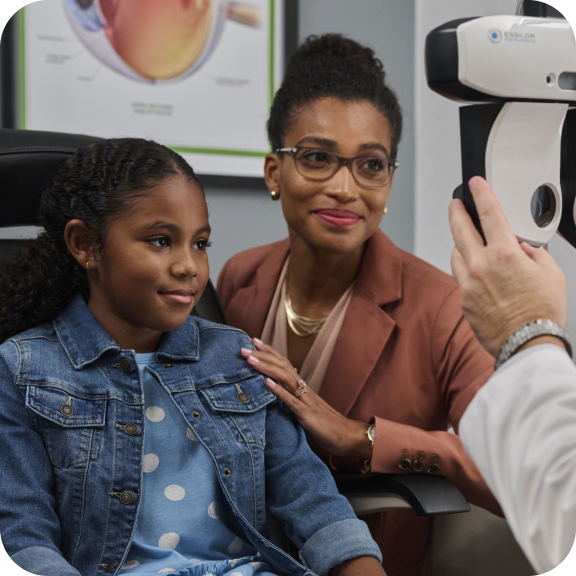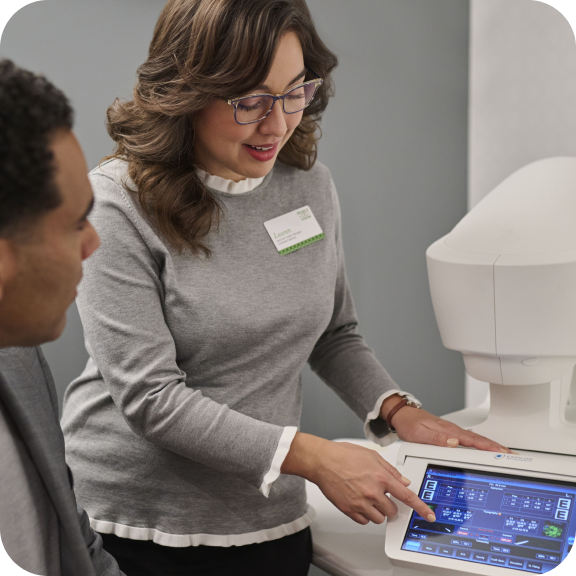Types of bifocal and multifocal contact lenses
Contact lenses have come a long way since the first bifocal contacts went mainstream in the late 1980s. Today, bifocal and multifocal contact lenses fall under a few basic designs.
Simultaneous vision lenses
Simultaneous vision lenses have different zones for far, near, and intermediate vision. They stay centered on the eye and don’t move with eye movements. While this may seem difficult to adjust to, eventually your eyes learn which part of the lens to focus on. This type of contact has two designs:
- Concentric multifocal contact lenses: Have a series of alternating concentric rings with different powers for near, intermediate, and distance vision. The center of the lens is dedicated to one focal point (either near or distance), and the surrounding rings alternate between near and distance corrections.
- Aspheric multifocal contact lenses: Have a more gradual change from the center of the lens to the outside. The center of the lens provides near vision correction, while the peripheral areas gradually transition to intermediate and distance vision correction.
Simultaneous vision lenses work best for patients who need correction for both near and far vision and are comfortable with the adaptation period that’s required.
Segmented lenses
Segmented multifocal contact lenses are made of rigid gas-permeable material and are designed similarly to bifocal lenses: The top part of the lens is for distance vision and the bottom is designated for near vision.
They move with your eye: When you look up you’ll be able to clearly see distant objects, and when you look down you’ll have clearer vision for reading. They’re ideal if you need vision correction at two different distances and prefer a clear separation between near and far vision areas.
Progressive contact lenses
Traditionally, bifocal and multifocal contact lenses have visible lines that separate the different prescriptions. Progressive contact lenses are an updated design without any visible lines.
They provide a smooth gradient from the center outward and remain stable on the eye, so there’s a natural transition between different focal points. Using progressive contact lenses can feel more natural than traditional bifocals or multifocal lenses, making them a popular choice for nearly any patient.
Bifocal contacts for astigmatism
In the past, people who wore contacts for astigmatism had to switch to eyeglasses if they needed bifocals. However, there are now bifocal contacts for astigmatism, called toric multifocal lenses. These lenses have different powers for near and distance vision, as well as specific areas to correct astigmatism. They are designed to stay in place on the eye. If you need multifocal correction and have astigmatism, ask your eye care professional about this type of multifocal contact lens.




































